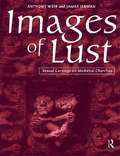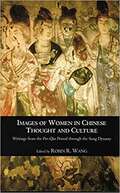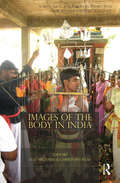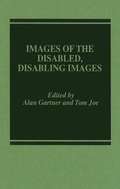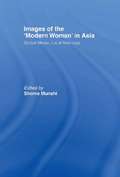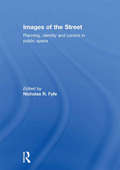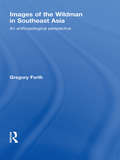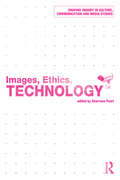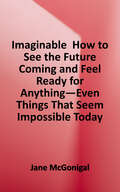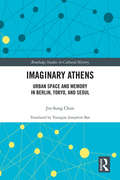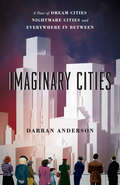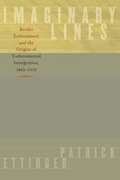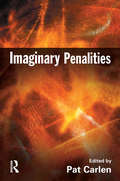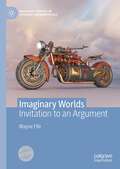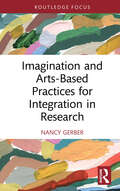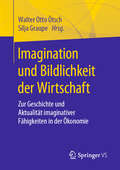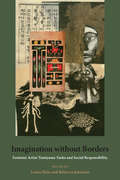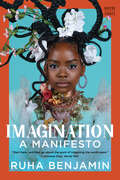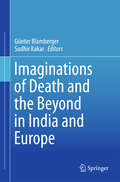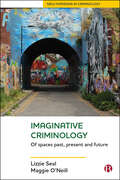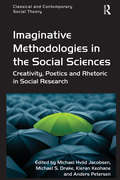- Table View
- List View
Images of Justice: A Legal History Of The Northwest Territories And Nunavut As Traced Through The Yellowknife Courthouse Collection Of Inuit Sculpture (McGill-Queen's Indigenous and Northern Studies #154)
by Dorothy Harley EberImages of Justice resonates with voices of the North and comes alive through interviews with many of those involved in the cases - defendants, judges, and prosecutors. Eber also provides valuable information on the little-known carvers who created these remarkable works of art. At a time when alternative legal systems for Native peoples are being debated, Images of Justice provides a lively, accessible account of the northern courts, their evolution, and their future in a changing northern society.
Images of Lust: Sexual Carvings on Medieval Churches
by James Jerman Anthony WeirSexually explicit sculptures may be found on a number of medieval churches in France and Spain. This fascinating study examines the origins and purposes of these sculptures, viewing them not as magical fertility symbols, nor even as idols of ancient pre-Christian religions, but as serious works that dealt with the sexual customs and salvation of medieval folk, and thus gave support to the Church's moral teachings.
Images of Women in Chinese Thought and Culture: Writings from The Pre-Qin Period Through the Song Dynasty
by Robin WangThis rich collection of writings--many translated especially for this volume and some available in English for the first time--provides a journey through the history of Chinese culture, tracing the Chinese understanding of women as elucidated in writings spanning more than two thousand years. From the earliest oracle bone inscriptions of the Pre-Qin period through the poems and stories of the Song Dynasty, these works shed light on Chinese images of women and their roles in society in terms of such topics as human nature, cosmology, gender, and virtue.
Images of the Body in India: South Asian and European Perspectives on Rituals and Performativity
by Christoph Wulf Axel MichaelsThis intriguing book engages with the concept of the body in its cultural context by acknowledging and demonstrating that the human body is understood differently in Western and Indian cultures. The contributors go on to show that any attempt to put forward a single concept of the body within Indian culture would be misleading. Divided into three parts, the book examines the considerable and often conflicting variations in body images and body concepts. In Part One the contributors focus on the representation of the body in religious and philosophical texts; representations that emerged from reading, translating and interpreting classical writings from diverse historical and anthropological approaches. Through predominantly ethnographic studies, Part Two explores the role of the body in narratives and ritual performance, from dance to ritualistic ceremonies. Visualisation processes of the body are examined in Part Three, focusing on developments in modern and contemporary periods: from visual practices at the Mughal court, to the multiple bodies of the bride, and the influence of new media. This volume is a fascinating collection of articles for those in the fields of sociology and anthropology, history, religion, cultural studies and South Asian studies.
Images of the Disabled, Disabling Images
by Alan Gartner Tom JoeIn this collection of a dozen essays, writers with strong backgrounds in the disability rights movement examine the roots of public attitudes toward the disabled. Several essays consider portrayals of people with disabilities in literature, film, and journalism. Others explore social policy toward the disabled in education, employment, and health-care. Nat Hentoff's powerful piece, ""The Awful Privacy of Baby Doe," expresses the author's outrage over the case of a child born with spina bifida who was denied treatment because doctors persuaded her parents that she would be better off dead.
Images of the Modern Woman in Asia: Global Media, Local Meanings
by Shoma MunshiIn examining the links between gender and the media, this volume asks questions involving the relationship between global media flows, gender and modernity in the region.
Images of the Street: Planning, Identity and Control in Public Space
by Nicholas R. FyfeImages of the Street captures the vitality, excitements and tensions of the street. Using examples from the U.K, India, Australia and North America the contributors draw on research in cultural geography, sociolgy, cultural studies and planning to explore the making and meaning of urban space.Among the themes examined are:1.the way streetscapes are shaped by interplay between politics, planning and local political economy 2.social differences of individuals experiences' of the street 3.how social identities are shaped and represented in fiction and film 4.the meaning and significance of streets as settings to play out social practices 5.how social life is regulated on the street, formerly by police and indirectly through architecture and urban design
Images of the Wildman in Southeast Asia: An Anthropological Perspective
by Gregory ForthThe book examines ‘wildmen’, images of hairy humanlike creatures known to rural villagers and other local people in Southeast Asia and elsewhere. Sometimes described in considerable detail, the creatures are reported as still living or as having survived until recent times. The aim of the book is to discover the source of these representations and their status in local systems of knowledge, partly in relation to distinct categories of spiritual beings, known animals, and other human groups. It explores images of the wildman from throughout Southeast Asia, focusing in particular on the Indonesian islands, and beyond, including the Asian mainland, Africa, North America, Africa, Australia, and Oceania. The book reveals how, in Southeast Asia and elsewhere, ‘wildmen’ cannot readily be explained as imaginary constructs rooted in cultural values and social institutions, nor as simply another kind of ‘spirit’. Also critically examined is a view of such figures as fundamentally similar expressions of a pan-human mental ‘archetype’. Forth concludes that many Asian and African figures are grounded in experience or memories of anthropoid apes supplemented by encounters with ethnic others. Representations developed among European immigrants (including the North American ‘sasquatch’) are, in part, similarly traceable to an indirect knowledge of primates, informed by long-standing European representations of hairy humans that have coloured western views of non-western peoples and which may themselves originate in ancient experience of apes. At the same time, the book demonstrates how Indonesian and other Malayo-Polynesian images cannot be explained in the same way, and explores the possibility of these reflecting an ancient experience of non-sapiens hominins.
Images, Ethics, Technology (Shaping Inquiry in Culture, Communication and Media Studies)
by Sharrona PearlImages, Ethics, Technology explores the changing ethical implications of images and the ways they are communicated and understood. It emphasises how images change not only through their modes of representation, but through our relationship to them. In order to understand images, we must understand how they are produced, communicated, and displayed. Each of the 14 essays chart the relationship to technology as part of a larger complex social and cultural matrix, highlighting how these relations constrain and enable notions of responsibility with respect to images and what they represent. They demonstrate that as technology develops and changes, the images themselves change, not just with respect to content, but in the very meanings and indices they produce. This is a collection that not only asks: who speaks for the art? But also: who speaks for the witnesses, the cameras, the documented, the landscape, the institutional platforms, the taboos, those wishing to be forgotten, those being seen and the experience of viewing itself? Images, Ethics, Technology is ideal for advanced level students and researchers in media and communications, visual culture and cultural studies.
Imagetransfers in der personalisierten Organisationskommunikation: Konzeption und Validierung des dualen Imagetransfermodells (Organisationskommunikation)
by Jens HagelsteinIn diesem Buch werden Imagetransfers in der personalisierten Organisationskommunikation untersucht. Dabei wird das duale Imagetransfermodell entwickelt, das affektive und kognitive, explizite und implizite sowie kontrollierte und automatische Imagetransfers erfasst, und anschließend in drei Experimentalstudien überprüft. Aus den theoretischen und empirischen Erträgen der Arbeit werden Handlungsempfehlungen für das organisationale Kommunikationsmanagement abgeleitet.Der AutorJens Hagelstein ist wissenschaftlicher Mitarbeiter am Institut für Kommunikations- und Medienwissenschaft der Universität Leipzig. Seine Forschungsschwerpunkte umfassen strategische Kommunikation, Public Relations und Werbekommunikation.
Imaginable: How to See the Future Coming and Feel Ready for Anything--Even Things That Seem Impossible Today
by Jane McGonigalWorld-renowned future forecaster, game designer, and NEW YORK TIMES bestselling author Jane McGonigal gives us the tool s to imagine the future without fear. An accessible, optimistic field guide to the future. --San Francisco Chronicle "Reading this book is like sitting down with a creative, optimistic friend--and getting up as a new version of yourself.""--Daniel H. Pink, New York Times bestselling author of When The COVID-19 pandemic, increasingly frequent climate disasters, a new war -- events we might have called ""unimaginable"" or ""unthinkable"" in the past are now reality. Today it feels more challenging than ever to feel unafraid, hopeful, and equipped to face the future with optimism. How do we map out our lives when it seems impossible to predict what the world will be like next week, let alone next year or next decade? What we need now are strategies to help us recover our confidence and creativity in facing uncertain futures.In Imaginable, Jane McGonigal draws on the latest scientific research in psychology and neuroscience to show us how to train our minds to think the unthinkable and imagine the unimaginable. She invites us to play with the provocative thought experiments and future simulations she's designed exclusively for this book, with the goal to: - Build our collective imagination so that we can dive into the future and envision, in surprising detail, what our lives will look like ten years from now - Develop the courage and vision to solve problems creatively - Take actions and make decisions that will help shape the future we desire - Access "urgent optimism," an unstoppable force within each of us that activates our sense of agency Imaginable teaches us to be fearless, resilient, and bold in realizing a world with possibilities we cannot yet imagine--until reading this transformative, inspiring, and necessary book .
Imaginary Athens: Urban Space and Memory in Berlin, Tokyo, and Seoul (Routledge Studies in Cultural History #97)
by Jin-Sung ChunThis book comprehensively examines architecture, urban planning, and civic perception in three modern cities as they transform into national capitals through an entangled, transnational process that involves an imaginative geography based on embellished memories of classical Athens. Schinkel’s classicist architecture in Berlin, especially the principle of tectonics at its core, came to be adopted effectively at faraway cities in East Asia, merging with the notion of national polity as Imperial Japan sought to reinvent Tokyo and mutating into an inevitable reflection of modern civilization upon reaching colonial Seoul, all of which give reason to ruminate over the phantasmagoria of modernity.
Imaginary Cities: A Tour of Dream Cities, Nightmare Cities, and Everywhere in Between
by Darran AndersonFor as long as humans have gathered in cities, those cities have had their shining—or shadowy—counterparts. Imaginary cities, potential cities, future cities, perfect cities. It is as if the city itself, its inescapable gritty reality and elbow-to-elbow nature, demands we call into being some alternative, yearned-for better place. This book is about those cities. It’s neither a history of grand plans nor a literary exploration of the utopian impulse, but rather something different, hybrid, idiosyncratic. It’s a magpie’s book, full of characters and incidents and ideas drawn from cities real and imagined around the globe and throughout history. Thomas More’s allegorical island shares space with Soviet mega-planning; Marco Polo links up with James Joyce’s meticulously imagined Dublin; the medieval land of Cockaigne meets the hopeful future of Star Trek. With Darran Anderson as our guide, we find common themes and recurring dreams, tied to the seemingly ineluctable problems of our actual cities, of poverty and exclusion and waste and destruction. And that’s where Imaginary Cities becomes more than a mere—if ecstatically entertaining—intellectual exercise: for, as Anderson says, “If a city can be imagined into being, it can be re-imagined.” Every architect, philosopher, artist, writer, planner, or citizen who dreams up an imaginary city offers lessons for our real ones; harnessing those flights of hopeful fancy can help us improve the streets where we live. Though it shares DNA with books as disparate as Calvino’s Invisible Cities and Jane Jacobs’s Death and Life of Great American Cities, there’s no other book quite like Imaginary Cities. After reading it, you’ll walk the streets of your city—real or imagined—with fresh eyes.
Imaginary Lines
by Patrick EttingerAlthough popularly conceived as a relatively recent phenomenon, patterns of immigrant smuggling and undocumented entry across American land borders first emerged in the late nineteenth century. Ingenious smugglers and immigrants, long and remote boundary lines, and strong push-and-pull factors created porous borders then, much as they do now. Historian Patrick Ettinger offers the first comprehensive historical study of evolving border enforcement efforts on American land borders at the turn of the twentieth century. He traces the origins of widespread immigrant smuggling and illicit entry on the northern and southern United States borders at a time when English, Irish, Chinese, Italian, Russian, Lebanese, Japanese, Greek, and, later, Mexican migrants created various "backdoors" into the United States. No other work looks so closely at the sweeping, if often ineffectual, innovations in federal border enforcement practices designed to stem these flows. From upstate Maine to Puget Sound, from San Diego to the Lower Rio Grande Valley in Texas, federal officials struggled to adapt national immigration policies to challenging local conditions, all the while battling wits with resourceful smugglers and determined immigrants. In effect, the period saw the simultaneous "drawing" and "erasing" of the official border, and its gradual articulation and elaboration in the midst of consistently successful efforts to undermine it.
Imaginary Penalities
by Pat CarlenThis book is concerned to explore the idea of imaginary penalities and to understand why the management of criminal justice and criminal justice systems has so often reached crisis point. Its underlying theme is that when political strategies of punitive populism are combined with managerialist techniques of social auditing, a new all-encompassing form of governance has emerged - powerless to deliver what it promises but with a momentum of its own and increasingly removed from proper democratic accountability. A highly distinguished international group of contributors explores this set of themes in a variety of different contexts taken from the UK, N. America, Europe and Australia. It will be essential reading for anybody seeking to understand some of the root causes of increasing prison populations, social harms such as recidivism and domestic violence and the increasingly important role of criminal justice within systems of governance.
Imaginary Worlds: Invitation to an Argument (Palgrave Studies in Literary Anthropology)
by Wayne FifeIn this work, the author contends that we should create a comparative framework for the study of imaginary worlds in the social sciences. Making use of extended examples from both science fiction and fantasy fiction, as well as the living movement of steampunk, the reader is invited to an argument about how best to define imaginary worlds and approach them as social locations for qualitative research. It is suggested in this volume that increasing economic and existential forms of alienation fuel the contemporary surge of participation in imaginary worlds (from gaming worlds to young adult novels) and impel a search for more humane forms of social and cultural organization. Suggestions are made about the usefulness of imaginary worlds to social scientists as places for both testing out theoretical formulations and as tools for teaching in our classrooms.
Imagination and Arts-Based Practices for Integration in Research
by Nancy GerberImagination and Arts-Based Practices for Integration in Research explores the philosophical assumptions, defining concepts, and methodological issues related to the introduction of intentional imaginative mental processes and arts-based practices into some or all phases of investigation, and data integration of particular research approaches. Although typically central to mixed, multi-method, and arts-based research, the practice of integrating diverse forms of data might be applied to other research traditions. The integration of data diversity represents a deviation from traditional scientific thinking demanding a dramatic paradigm shift inclusive of multi-dimensional, nondiscursive, aesthetic, rhizomatic, and imaginative mental processes. In this book, imaginative mental processes and arts-based practices are described and illustrated as approaches to investigating, revealing, and understanding the elusive yet essential meanings hidden in the crevices, shadows, and liminal spaces in between diverse data sets leading to integration, illumination, and synthesis. The book will appeal to arts-based, mixed methods, and adventurous researchers. It walks the reader through the revisionist philosophical assumptions and offers aligned methodological suggestions to the induction of imaginative mental processes and arts-based practices into research.
Imagination and Invention (Univocal)
by Gilbert SimondonA radical rethinking of the theory and the experience of mental images Here, in English translation for the first time, is Gilbert Simondon&’s fundamental reconception of the mental image and the theory of imagination and invention. Drawing on a vast range of mid-twentieth-century theoretical resources—from experimental psychology, cybernetics, and ethology to the phenomenological reflections of Sartre and Merleau-Ponty—Imagination and Invention provides a comprehensive account of the mental image and adds a vital new dimension to the theory of psychical individuation in Simondon&’s earlier, highly influential work.Simondon traces the development of the mental image through four phases: first a bundle of motor anticipations, the image becomes a cognitive system that mediates the organism&’s relation to its milieu, then a symbolic and abstract integration of motor and affective experience to, finally, invention, a solution to a problem of life that requires the externalization of the mental image and the creation of a technical object. An image cannot be understood from the perspective of one phase alone, he argues, but only within the trajectory of its progressive metamorphosis.
Imagination und Bildlichkeit der Wirtschaft: Zur Geschichte und Aktualität imaginativer Fähigkeiten in der Ökonomie
by Walter Otto Ötsch Silja GraupeDer vorliegende Band stellt ein erstes Grundlagenwerk zur Imaginationsforschung in der Ökonomie dar. Er erforscht die ökonomische Theoriegeschichte (auch mit Bezug auf die Philosophiegeschichte) und fragt, welche Bilder und Selbstbilder über Menschen, über das wirtschaftliche System und über die Zukunft in ökonomischen Theorien enthalten sind. Wie ist die Beschäftigung mit Imaginationen im Mainstream der Wirtschaftswissenschaften verloren gegangen und wie kann sie wiederbelebt werden?Prof. Dr. Walter Otto Ötsch ist Professor für Ökonomie und Kulturgeschichte an der Cusanus Hochschule für Gesellschaftsgestaltung.Prof. Dr. Silja Graupe ist Professorin für Ökonomie und Philosophie und Leiterin des Instituts für Ökonomie der Cusanus Hochschule für Gesellschaftsgestaltung.
Imagination without Borders: Feminist Artist Tomiyama Taeko and Social Responsibility (Michigan Monograph Series in Japanese Studies #69)
by Laura Hein Rebecca JennisonTomiyama Taeko, a Japanese visual artist born in 1921, is changing the way World War II is remembered in Japan, Asia, and the world. Her work deals with complicated moral and emotional issues of empire and war responsibility that cannot be summed up in simple slogans, which makes it compelling for more than just its considerable beauty. Japanese today are still grappling with the effects of World War II, and, largely because of the inconsistent and ambivalent actions of the government, they are widely seen as resistant to accepting responsibility for their nation’s violent actions against others during the decades of colonialism and war. Yet some individuals, such as Tomiyama, have produced nuanced and reflective commentaries on those experiences, and on the difficulty of disentangling herself from the priorities of the nation despite her lifelong political dissent. Tomiyama’s sophisticated visual commentary on Japan’s history—and on the global history in which Asia is embedded—provides a compelling guide through the difficult terrain of modern historical remembrance, in a distinctively Japanese voice.
Imagination: A Manifesto (A Norton Short #0)
by Ruha Benjamin“Start here, and then go about the work of imagining the world anew.” —Arimeta Diop, Vanity Fair In this revelatory work, Ruha Benjamin calls on us to take imagination seriously as a site of struggle and a place of possibility for reshaping the future. A world without prisons? Ridiculous. Schools that foster the genius of every child? Impossible. Work that doesn’t strangle the life out of people? Naive. A society where everyone has food, shelter, love? In your dreams. Exactly. Ruha Benjamin, Princeton University professor, insists that imagination isn’t a luxury. It is a vital resource and powerful tool for collective liberation. Imagination: A Manifesto is her proclamation that we have the power to use our imaginations to challenge systems of oppression and to create a world in which everyone can thrive. But obstacles abound. We have inherited destructive ideas that trap us inside a dominant imagination. Consider how racism, sexism, and classism make hierarchies, exploitation, and violence seem natural and inevitable—but all emerged from the human imagination. The most effective way to disrupt these deadly systems is to do so collectively. Benjamin highlights the educators, artists, activists, and many others who are refuting powerful narratives that justify the status quo, crafting new stories that reflect our interconnection, and offering creative approaches to seemingly intractable problems. Imagination: A Manifesto offers visionary examples and tactics to push beyond the constraints of what we think, and are told, is possible. This book is for anyone who is ready to take to heart Toni Morrison’s instruction: “Dream a little before you think.”
Imaginations of Death and the Beyond in India and Europe
by Sudhir Kakar Günter BlambergerThis volume explores current images of afterlife/afterdeath and the presence of the dead in the imaginations of the living in Indian and European traditions. Specifically, it focuses on the deepest and most fundamental uncertainty of human existence---the awareness of human mortality, on which depends any assignment of meaning to earthly existence as also to notions of worldly and otherworldly salvation. This central idea is addressed in the literature, arts, audiovisual media and other cultural artefacts of the two traditions. The chapters are based on two main assumptions: First, that one cannot report on the direct experience of death; so it is only possible to speak allegorically of it. Second, in contemporary Western societies, marked by structural atheism, people look at literature, the arts and mass media to study their depiction and reading of traditionally religious questions of disease, death and the Beyond. This is in contrast to Asian civilizations whose preoccupation with death and Beyond is persistent and perhaps central to the civilizations’ highest thought. The chapters cover a wide spectrum of disciplinary approaches, from psychoanalysis to religious, anthropological, literary and film studies, from sociology and philosophy to art history, and address issues of unsettling power: comforting illusions of afterlife; the relations between afterlife and fertility; visions of technological immortalization of mankind; the problem of thinking about death after the “death of God”; socialist utopias of bodily immortality; fear of Hell and punishment; different concepts in relating the living and the dead; near-death experiences; and cultural practices of spiritualism, occultism and suicide.
Imaginative Criminology: Of Spaces Past, Present and Future (New Horizons in Criminology)
by Maggie O'Neill Lizzie SealThis distinctive and engaging book proposes an imaginative criminology, focusing on how spaces of transgression are lived, portrayed and imagined. These include spaces of control or confinement, including prison and borders, and spaces of resistance. Examples range from camps where asylum seekers and migrants are confined, to the exploration of deviant identities and the imagined spaces of surveillance and control in young adult fiction. Drawing on oral history, fictive portrayals, walking methodologies, and ethnographic and arts-based research, the book pays attention to issues of gender, sexuality, age, ethnicity, mobility and nationality as they intersect with lived and imagined space.
Imaginative Methodologies in the Social Sciences: Creativity, Poetics and Rhetoric in Social Research (Classical and Contemporary Social Theory)
by Michael Hviid Jacobsen Anders Petersen Michael S. DrakeImaginative Methodologies in the Social Sciences develops, expands and challenges conventional social scientific methodology and language by way of literary, poetic and other alternative sources of inspiration, as sociologists, social workers, anthropologists, criminologists and psychologists all rethink, provoke and reignite social scientific methodology. Challenging the mainstream orthodoxy of social scientific methodology, which closely guards the boundaries between the social sciences and the arts and humanities, this volume reveals that authors and artists are often engaged in projects parallel to those of the social sciences and vice versa, thus demonstrating that artistic and cultural production does not necessarily constitute a specialist field, but is in fact integral to social reality. As such, it will be of interest to scholars and students in the social sciences and across the arts and humanities working on the philosophy of social science, methodology, social theory, creativity, poetics, pedagogy and other related topics.
Imagine Being More Afraid of Freedom than Slavery
by Pamela SneedAn incendiary literary work more relevant now than ever.“if anger were an ax/it would split me open/and if this is a sermon/let it be my granddaddy’s sermon/my grandmother’s foottapping/steady rocking/choir singing” —from "It Is Not a New Age"First published in 1998, Imagine Being More Afraid of Freedom than Slavery is the debut collection by acclaimed poet and performer Pamela Sneed. Provocative and potent, it tackles the political and personal issues of enslavement, sexuality, emotional trauma, and abuse. These poems chart the journey of an artist trying to escape cycles of dependency and reclaim lost self and identity. Drawing parallels to Harriet Tubman’s journey on the Underground Railroad, Sneed’s explorations of the woods are a metaphor and emotional path one must explore to attain self-ownership. Sneed’s poems are bound by the search for love, freedom, and justice—from images of lesbian love to Emmet Till’s bloated body, they offer a raging cry and a roadmap for those interested in transforming the personal into social justice and abolitionist practices.

